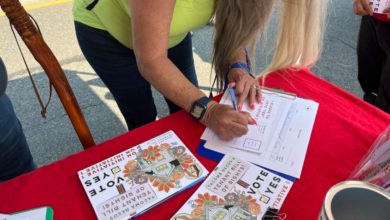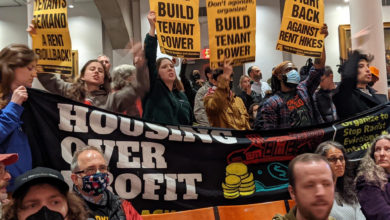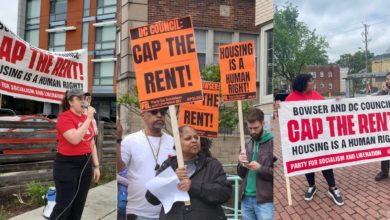This article was updated on Jan. 24 after the Utah Department of Workplace Services, which is in charge of the Utah rental assistance program, responded to some of the criticisms made of them below.
In early 2021, the state of Utah received $215 million in rental assistance. Its purpose was clear: keep families housed. The state was expected to distribute the funds efficiently, but by the fall, Utah had only distributed 39 percent of their funding. In November, the U.S. Treasury had to ask the state to submit a “Program Improvement Plan” after they found that Utah failed to meet its requirement of 65 percent distribution by their deadline. At the end of 2021, the state still hadn’t reached their fall requirement.
If the U.S. Treasury isn’t happy with Utah’s proposed improvement plan, they could choose to reallocate the funds to a different agency. The Department of Workforce Services, the Utah state agency responsible for the rental assistance program, says, “If that happens, the funding would likely just be shifted to the city and county level, keeping the funds in Utah.” But the U.S. Treasury’s language is less promising — all they say is that a certain amount of the funds will be subject to recapture by other agencies if the state doesn’t submit an adequate improvement plan.
Despite the impact it will have on tenants in Utah, DWS has refused to share their proposed PIP with the public.
DWS eliminates bare-minimum support for applicants
There was one change that the state did make public last year. According to the Salt Lake Tribune, they said they will stop contracting with local non-profits like Salt Lake Community Action, which had been helping to process applications and verify tenants.
People involved with the rental assistance program were quick to raise concerns. Removing these tasks from community action groups would shift the ERA program almost exclusively online and make it less accessible to tenants that aren’t comfortable with technology or don’t have a computer.
DWS told Liberation News that the contracts with Community Action and its partners are not actually ending in 2022 — they have only shifted some responsibilities and changed what the contracts focus on.
“To my knowledge, that is extremely untrue,” says a former employee of a Community Action group, who wished to remain anonymous.
“I lost my job due to the contract with DWS ending, and some groups have lost entire departments.”
They added that there may be a draft of a new contract by the state that would have Community Action groups helping tenants access the application, but that’s it.
“We wouldn’t be involved in processing applications at all. Nothing beyond getting tenants to the application step — and even that isn’t set in stone.”
Five County AOG, and Open Doors Utah, two of the Community Action groups that have been processing rental assistance applications say they will stop accepting rental assistance applications in February.
Rent hikes continue
The rental assistance is meant to support vulnerable tenants. It can even be used to pay the legal fees of a tenant defending against eviction. One thing the U.S. Treasury never suggested though, is using the money for landlord legal fees. But in 2021, Utah spent almost $200,000 to pay the attorneys of landlords that are actively carrying out evictions.
Some landlords are even increasing their own profits during the ERA program.
Downtown West, an SLC apartment complex, has raised its rent anywhere between $100 and $400 for all of its tenants — after receiving almost $700,000 of rental relief funds from the state. The increased rent has forced many tenants to begin the agonizing search for a more affordable place to live. All of this at a time when 3,565 people already go without shelter on any given night in Salt Lake City.
As the housing crisis escalates, some members of the community are coming together to respond to the failures of the state.
Tenants fight back
Volunteers from the Salt Lake Liberation Center have hit the streets in the Fairpark and Downtown areas, door-knocking, tabling and flyering. They’re offering help with the rental assistance application and connecting with anyone facing housing insecurity. They’ve named the campaign “Assist and Resist.”
Cameron Haskins, a volunteer with the Liberation Center, says organizing with other renters in Salt Lake is the only option the state has left them.
“We can’t wait for this problem to get any worse. We’re in the middle of a brutal winter with multiple new COVID variants spreading, over 10,000+ COVID cases a day, but the state is still responding to the housing problem by evicting people who have nowhere else to go. If we don’t do anything, more and more people will continue to suffer. We have to help each other and fight back.”
Denise Weaver, a Utah resident and mother, completed the rental assistance process on her own.
“It took almost two months and there was no confirmation notice or update while I was waiting. I wouldn’t have known what to do next if that check hadn’t come in the mail.”
Deja Gaston, another Liberation Center volunteer, said the group plans to pressure the DWS office to release their Program Improvement Plan to the public and ramp up distribution.
“The biggest gains for working and oppressed people have been won when we organized and mobilized our communities. But we can’t stop with one win — we have to build a larger movement that broadens our demands of the government to cancel our rents, extend the eviction moratorium, and meet our basic needs as a working class.”
If you or someone you know in Utah is having trouble paying rent because of the COVID-19 pandemic, you can fill out an application for rental assistance at rentrelief.utah.gov. The funding for this program comes directly from our tax money, and 100 percent of it should go back into the hands of Utah tenants.
Get in contact with organizers on the ground @pslsaltlake on Instagram and Twitter.
Photo: Volunteers with the Salt Lake Liberation Center speak to community members outside a store. Liberation photo






